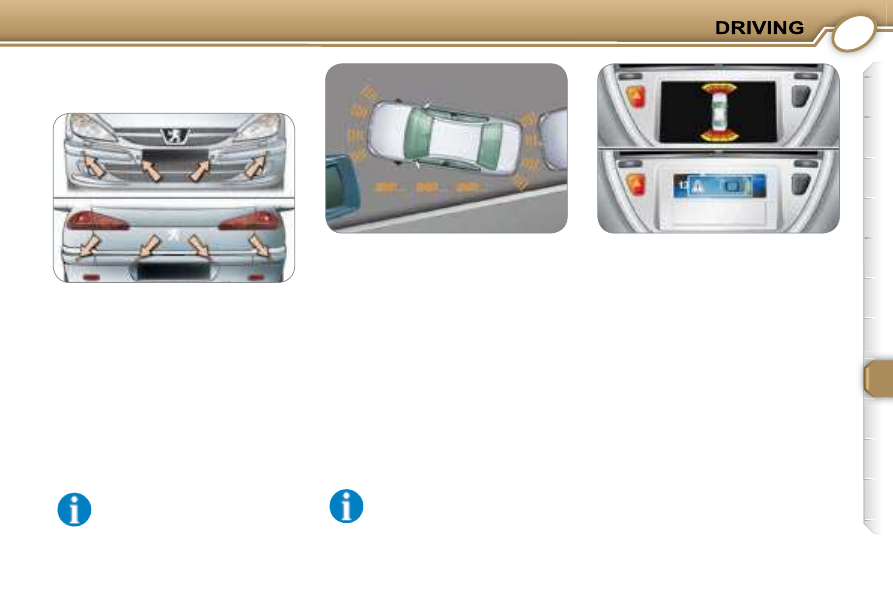Peugeot 607 (2007.5). Manual - part 8

8
95
VISUAL AND AUDIBLE REAR
AND/OR FRONT PARKING
ASSISTANCE
Detection zone
Detection
The system is activated when:
- reverse gear is engaged,
- the speed is below 6 mph (10 km/h)
in forward gear.
It is accompanied by an audible signal
and/or displaying of the vehicle on the
multifunction display.
The proximity of the obstacle is indi-
cated by:
- an audible signal which becomes
more rapid as the vehicle ap-
proaches the obstacle,
- a graphic on the multifunction dis-
play, with blocks which become in-
creasingly close to the vehicle.
The obstacle is located in relation to
the emission of the audible signal by
the speakers; that is, front or rear and
right or left.
When the distance between the vehi-
cle and the obstacle is less than ap-
proximately twenty-i ve centimetres,
the audible signal becomes continu-
ous and/or the "Danger" symbol ap-
pears on the multifunction display.
The system becomes inactive again:
- when you exit reverse gear,
- when the speed is above 6 mph
(10 km/h),
- at the end of the manoeuvre, when
stationary, after a few seconds
(front parking assistance only).
The system is deactivated when
the vehicle has been stationary
for more than 3 seconds.
This system consists of four proxim-
ity sensors, located in the rear and/or
front bumper.
It detects any obstacle (person, vehi-
cle, tree, gate, etc.) in front of or be-
hind the vehicle. However, it cannot
detect obstacles located directly under
the bumper.
An object, such as a stake, cone or any
other similar object may be detected
at the beginning of the manoeuvre but
may no longer be detected when the
vehicle comes close to it.
In bad weather or in winter,
ensure that the sensors are
not covered with mud, frost or
snow.